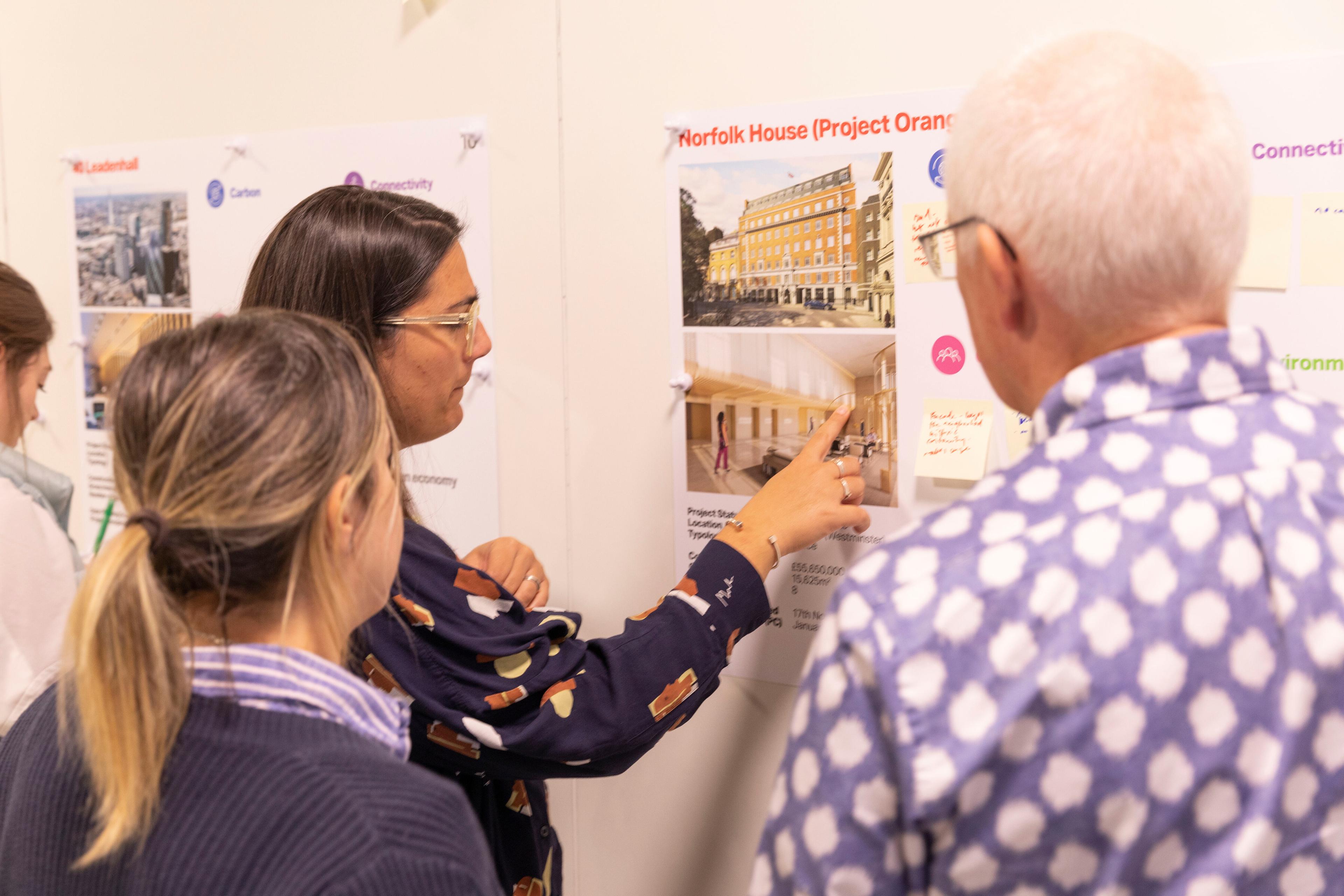Building change through radical collaboration
by Lucy Bruzzone, CISL
2022

In 2021, the Future Spaces Foundation (FSF) and the Cambridge Institute for Sustainability Leadership (CISL) collaborated to chair three talks on the interdependence of nature, society and economy. Part of our Building Natural Connections campaign, the talks explore how we can leverage these connections to provide solutions for a sustainable built environment.
In the first in a series of articles on the recommendations to come out of the campaign, Lucy Bruzzone, Programme Director of CISL’s Executive Education team, discusses its overall aims and the importance of a collective approach.
Education is a big part of what we do at CISL. My role is to develop bespoke engagement programmes for clients that help them build their leadership capacity and challenge their ambition and strategy in relation to sustainability. I’ve worked with built environment clients across the whole value chain, from product suppliers and developers to real estate professionals, and am especially interested in how we can use collaboration to achieve sustainable outcomes – an approach which remains a challenge for a highly fragmented industry.
Building Natural Connections – which CISL initiated with the FSF to explore new and existing pathways to deliver a resilient, prosperous future for all through the built environment – has been a valuable exercise for determining how different parties can learn from and build on each other’s expertise, including architects, investors, insurers, policymakers and more. The talks unite some important threads around where the sector needs to go and what that looks like in practice.
As net zero comes to the forefront of the conversation across the sector, with global campaigns like the UNFCCC’s Race To Zero and the World Green Building Council’s Net Zero Carbon Buildings Commitment, we felt it was important to steer the discussions towards not only recognising the issues and committing to change, but also exploring what can be done to achieve this. We’ve seen this transformation in our own work at CISL: we used to spend our time advising on why clients need to act, but now it’s more about how. In the coming months, we’ll be highlighting a range of the panelists’ specific calls to action and how different parties can collaborate to build momentum on this front.
If you distil our remit at CISL, it comes down to the transformation of people, nature and climate. The Building Natural Connections campaign recognises the interconnections between each of these. As we progress the climate agenda, it’s clear that no solutions work in isolation. Accordingly, all three of the talks feed into each other. ‘Changing climate, changing culture’, for example, introduces threads on finance and insurance that are explored further in ‘Banking on bio-resilience’, while ‘Unlocking social value’ focuses on the human dimension of sustainability, a topic raised in all three discussions. That people-oriented approach is critical to achieving sustainable outcomes. To understand the fundamentals of nature, biodiversity and climate change, you have to understand their impact on, and how they’re impacted by, both individuals and society.
The panelists – which included economists, investors, advisors and public officials from the likes of Aviva, the cities of Bogotá and Milan, and Architects’ Council of Europe – provided a rich diversity of views, bringing in voices both in and around the built environment, including the key actors of the economy: business, government and finance. By mixing these perspectives, we can learn a lot about mutual gains and different pathways to achieve shared goals.
One line of enquiry I found fascinating was the varying concept of value – the many forms it takes as well as how we determine the value of concepts like nature and social impact. Different communities value different things, and different metrics apply to different spaces. The discussions highlighted the need to think about value from new perspectives, with an emphasis on stepping outside of the usual methodological approaches based around financial value to consider alternative drivers such as recruitment and retention, community cohesion, and human and ecological wellbeing.
Another thought-provoking thread centred on communication and storytelling. How can we get stakeholders to understand our point of view and vice versa? This is the first step in localising solutions and determining viable long-term outcomes. You can’t just take something that works in one place and expect it to work in another.
And of course, we need to consider the impact of sustainable outcomes across different regions and populations. The panelists highlighted the inherent connection between the natural and built environments, and ways we could focus on and value nature to ultimately enhance and benefit both – whether it’s bringing more greenery into cities or, equally, creating awareness around the vital role of rural spaces in urban economies (for example, their links to food access).
The most important message to come out of the talks relates to collaboration. It’s crucial that from the outset of a project we get as many interdisciplinary parties as possible working together on the common goal of delivering sustainable outcomes. This is the model we took at CISL with our future headquarters, the Entopia Building, a deep retrofit project, and its at the heart of our new online course, Sustainable Real Estate: Creating a Better Built Environment. The aim is to unite actors and build collective understanding across the built environment industry, the financial sector (particularly on the insurance and investment side), end users and the wider community. This collective approach is key to systemic change.
Find out how CISL can help you to deliver a future-fit built environment here.


